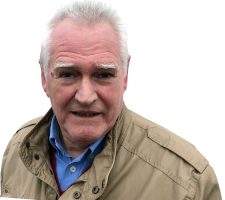

Mike Tilling, Arts Correspondent
Opinion
Oklahoma! - Rodgers And Hammerstein
It’s 1947 and you are sitting in the Drury Lane Theatre when the lights go down. You have just lived through the most murderous war in history and the truth about the death camps is beginning to emerge.
This sense of renewal and hope is what made the stage version of Oklahoma such a hit in the 40s. But what of the film version that followed in 1955? Does it still have the magic that had audiences raving back then?

While the cause of their troubles is obstinacy, one of the vehicles for it is the farm handyman Jud, played by the magnificently menacing Rod Steiger.
Jud is one of the many 'paralleling' devices in the film. Jud plays a malignant nemesis that 'parallels' the comic nemesis of the peddler Ali Hakim, who haunts the relationship between the second leads, Ado Annie and Will Parker.
Other paralleling devices include the athleticism of the male ensemble in ‘Kansas City’ contrasted with the female aestheticism of the balletic ‘Many a New Day’. To top and tail the film, Curly rides onto the screen with his horse for a companion and rides out with Lawrey by his side.
Also by Mike Tilling...
Classical Music: Robert Schumann: Piano WorksClassical Music: Path to the MoonHigh Energy Northanger AbbeyClassical Music: The Music Of Robert Schumann, Clara Schumann, And Johannes BrahmsClassical Music:Katja Kabanova – Leos JanacekHowever, as in all Musicals, there has to be a moment where the spine tingles. For me, this comes in the finale with the song Oklahoma. The whole ensemble gathers behind Curly and Lawrey, they crouch down and begin to chant ‘Okla – homa, Okla – homa’ slowly standing up until they burst into, ‘We know we belong to the land’. It is a thrilling piece of choreography: simple but effective.
And immediately after, Curly and Lawrey ride off, as they should, into the sunset.
Oklahoma! - Rodgers and Hammerstein
Director – Fred Zinnerman